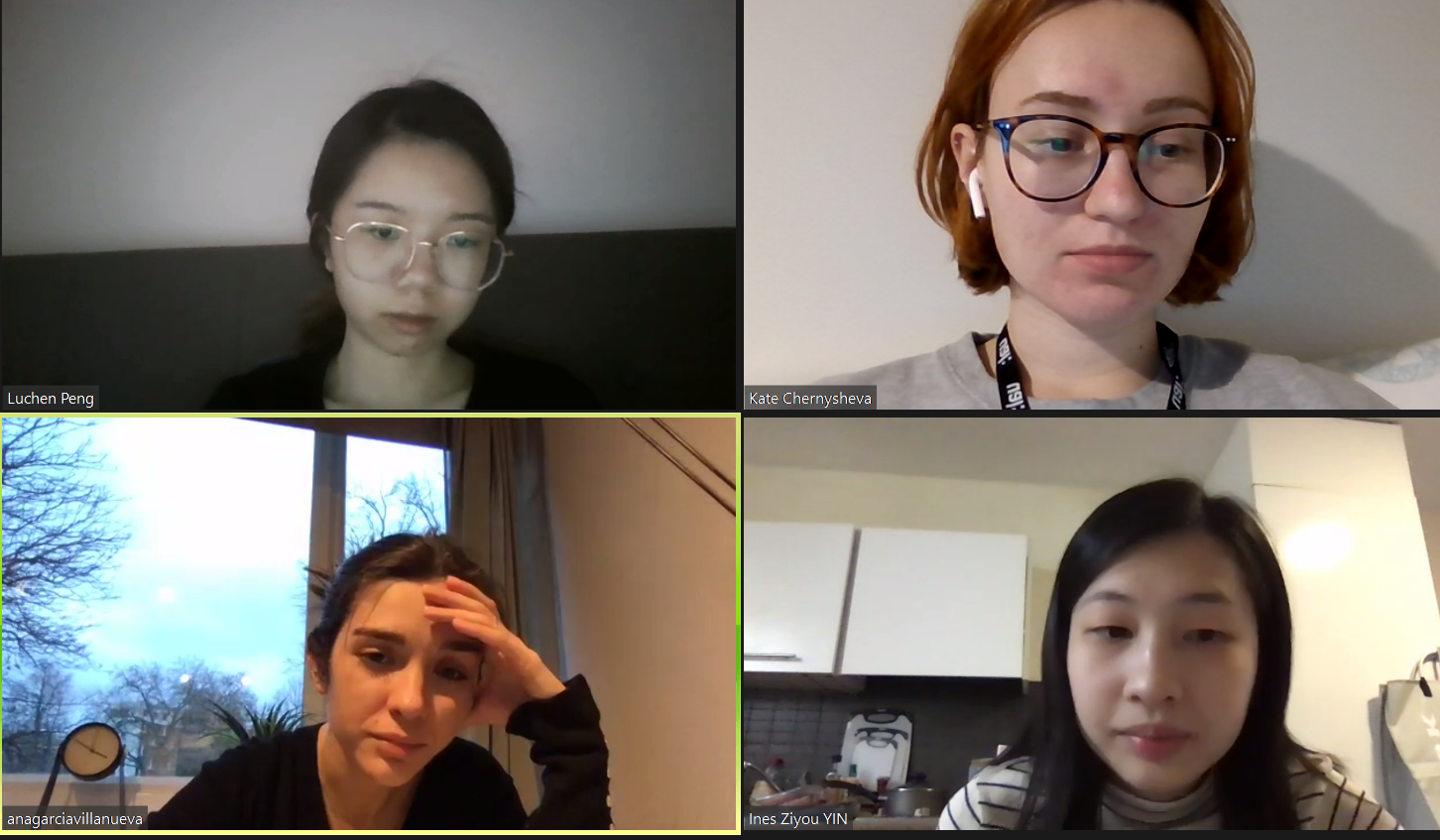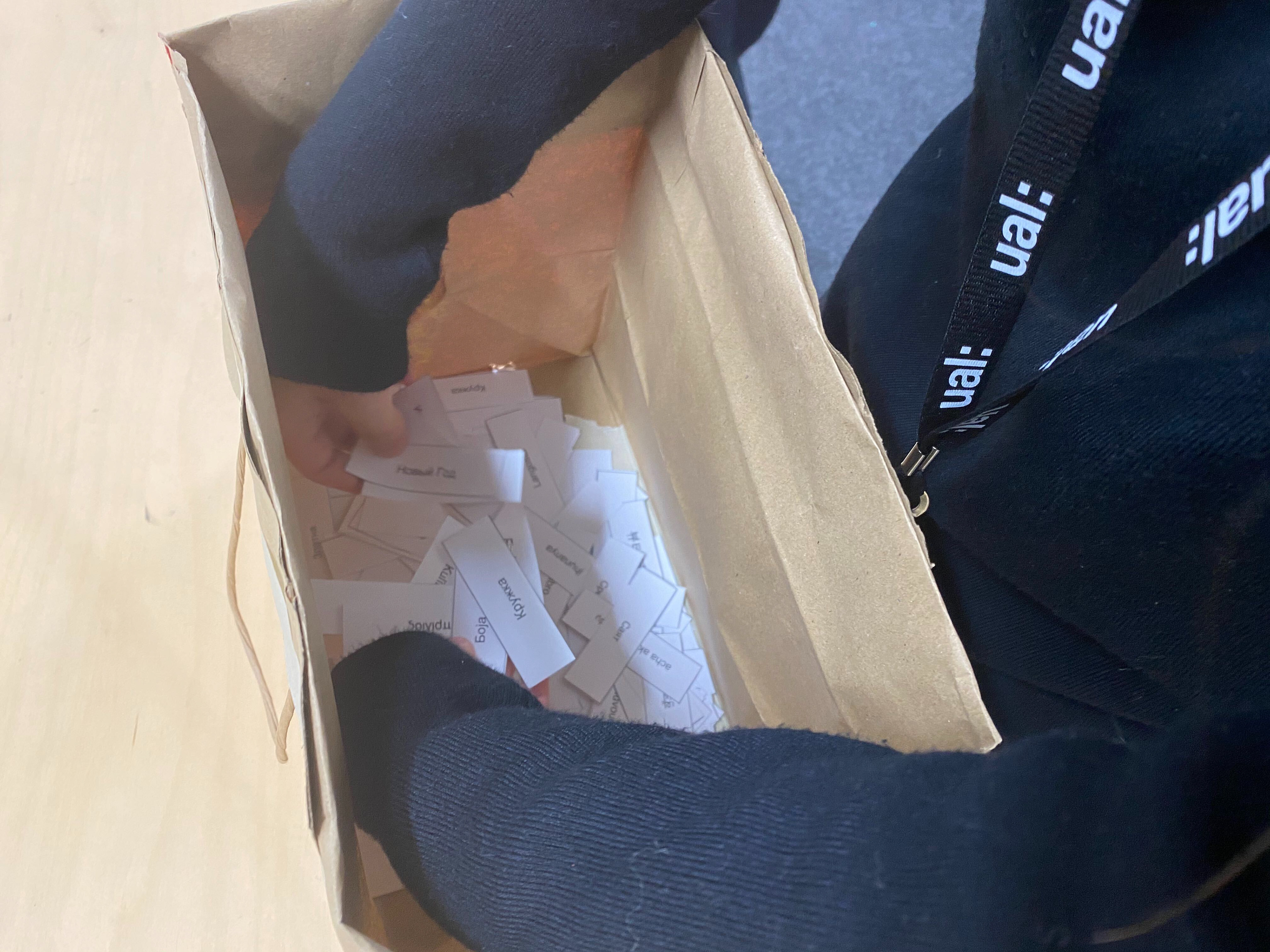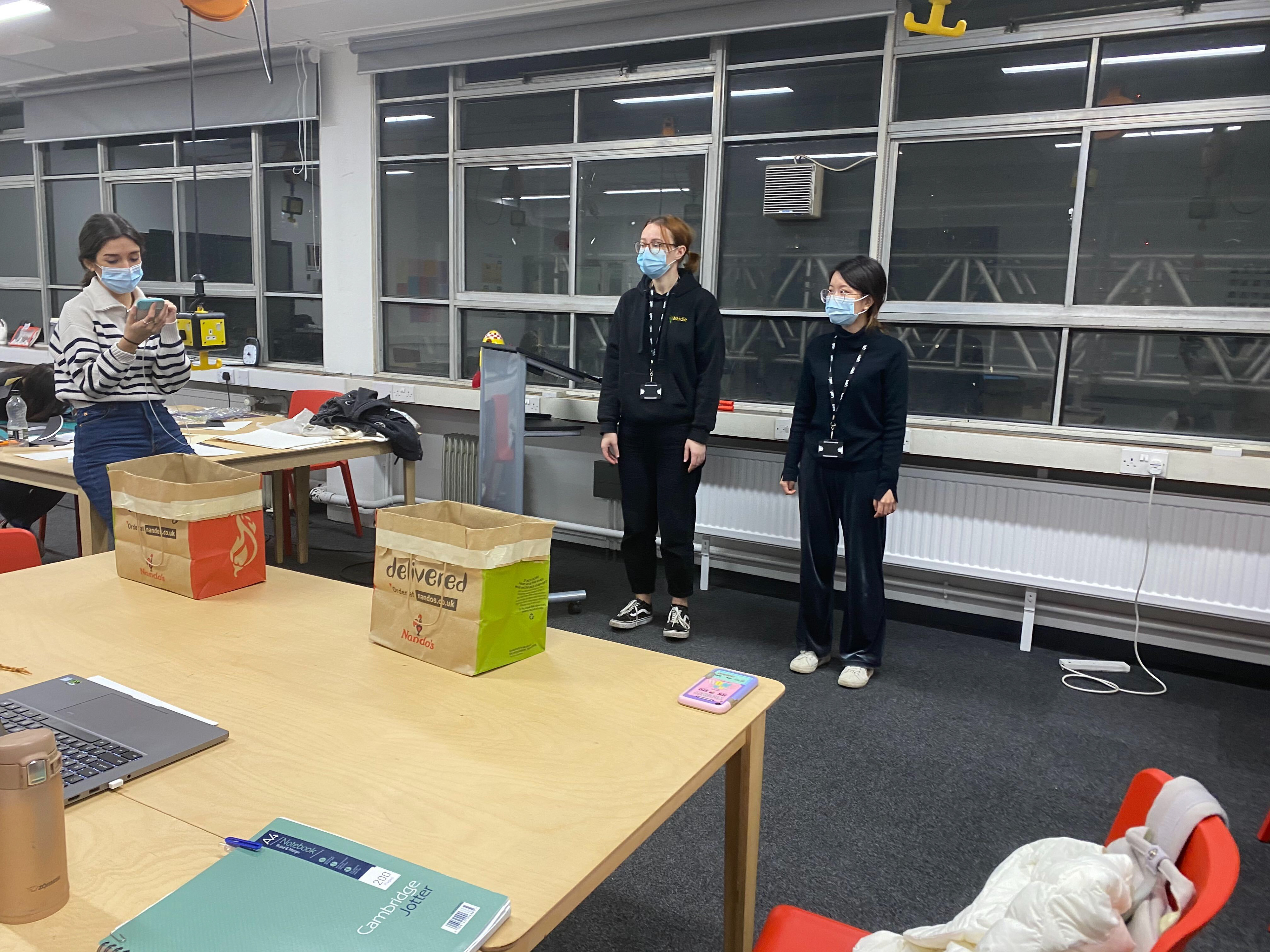20th November - 26th November
Group C: Ana Garcia Villanueva, Ziyou Yin (Ines), Luchen Peng, Kate Chernysheva
Ideation & Iteration
“Switching languages can be difficult for some, like switching trains <...>, for some, it is instant like a click”
(Fass, 2020).
This has triggered our ideation stage. How do we design an experience that represents the inside of a bilingual mind and the switching they undertake on a daily basis?
As a group of bilinguals, we were on the same page about this. We hung onto this idea of switching and started brainstorming.
"It’s like a traffic light. Bilinguals are always giving the green light to one language and the red light to the other. When you have to do that all the time, you become very good at repressing the words you don’t need"
(Villanueva, 2020)
From there a rough idea came to me immediately and Ines sketched it while we were on a call altogether.


Sketch made by Ines. Screenshot of the meeting taken by Kate.
It went as follows: two people tied together with a string have a goal to assemble certain objects in the right order to make up a story that was presented on the screen. They could only do so while their traffic light colour was lit up. Once it changes the other person has the privilege to come up to his/her table to continue assembling.
However, after we have done some testing we realised that there were certain things that just didn’t work for the experience. It seemed too easy and inorganic.


Process of testing. Shots taken by Ines.
Having a discussion John helped us to develop our idea a little further and create a whole game in which the entire class could be involved.
We got rid of the string idea and instead decided to use the advantage of how many people in our class are bilingual. We followed John’s advice and split our class into 2 groups where each will have to assemble a sequence relying on their native languages.
Survey created using Google Drive to get an understanding of who speaks which languages in our group. Made by Ana.
Furthermore, Luchen has previously shared with us a design project called The White Box by Hiroki Kawabe where he explores the ability to recognise objects from memory even though they are partially hidden. We decided to incorporate this into our game to make it more challenging.


Images from the White Box design project by Hiroki Kawabe. Images taken from online sources included in the bibliography section.
PREPARATION
Once we consolidated our idea, we started preparing and doing last-minute testing.





While Ana and I sorted out the words and teams for the game, Luchen and Ines created the sequence of objects following the inspiration from the White Box project.






Preparation process. Video and photos taken by Ines.
Final idea sketch. Made by Kate.
Presentation
Video from the presentation day. Taken by Ines.
The game was a great idea that everyone enjoyed very much even though there were some hiccups that we failed to consider. For example, in the survey we created we asked about the language people spoke, but not the one they read which was crucial and made it a little difficult for Sanya and Sanjana. We believe that with this experience we made the idea of bilingual switching more visual and attainable. If we were to develop it further, inspired by Mor’s feedback, we would want to explore the words and concepts that are not as on the surface (like pineapple, or a hat), but to dig a bit deeper and explore cultural and more sophisticated concepts.
bibliography
-John Fass in a conversation with the group on 19th November, 2020
-Ana Garcia Villanueva in a conversation with the group on 20th November, 2020
Futurity. (2018). How bilingual brains switch between languages. [online] Available at: https://www.futurity.org/languages-bilingualism-1861262/ [Accessed 10 Jan. 2021].
TED-Ed (2015). The benefits of a bilingual brain - Mia Nacamulli. YouTube. Available at: https://www.youtube.com/watch?v=MMmOLN5zBLY. [Accessed 10 Jan. 2021].
Jones, T. (2020). The Bilingual Brain by Albert Costa review – enlightening and astonishing. The Guardian. [online] 11 Feb. Available at: https://www.theguardian.com/books/2020/feb/11/the-bilingual-brain-albert-costa-language-review [Accessed 10 Jan. 2021].
基礎デザイン学科 卒業・修了制作展 Presentation’17 | Science of Design. (n.d.). 基礎デザイン学科 卒業・修了制作展 Presentation’17 | Science of Design. [online] Available at: http://www.kisode.com/presentation2017/hara/03_kawabe_hiroki.html [Accessed 10 Jan. 2021].
Images:
The White Box project:
http://www.kisode.com/presentation2017/hara/03_kawabe_hiroki.html
Boot Image:
https://lh3.googleusercontent.com/lmv6ZxX-rt-vNF-WknOhIAchpeommEbSMOo-Lofvx_ZxdmZEzSNc7b3L6yKxq6IYoTr2lw=s137
Fire Extinguisher:
https://lh3.googleusercontent.com/bYcG-RWm31Ew_GFWBKB5GI9q-wOM-Veh7an48jiM0XRKFd_vsd7maWzjxtE3BbFLixDX=s85